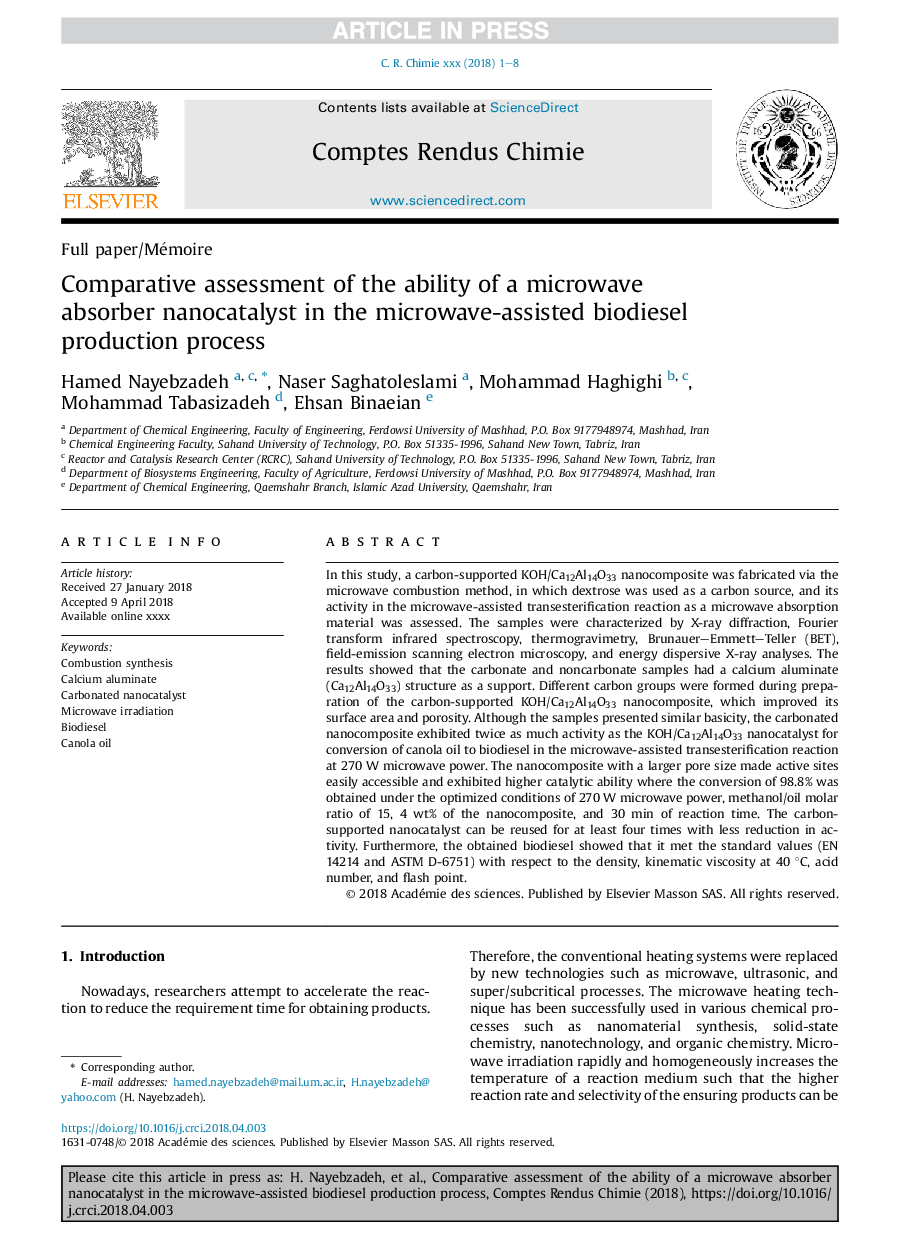| Article ID | Journal | Published Year | Pages | File Type |
|---|---|---|---|---|
| 6594405 | Comptes Rendus Chimie | 2018 | 8 Pages |
Abstract
In this study, a carbon-supported KOH/Ca12Al14O33 nanocomposite was fabricated via the microwave combustion method, in which dextrose was used as a carbon source, and its activity in the microwave-assisted transesterification reaction as a microwave absorption material was assessed. The samples were characterized by X-ray diffraction, Fourier transform infrared spectroscopy, thermogravimetry, Brunauer-Emmett-Teller (BET), field-emission scanning electron microscopy, and energy dispersive X-ray analyses. The results showed that the carbonate and noncarbonate samples had a calcium aluminate (Ca12Al14O33) structure as a support. Different carbon groups were formed during preparation of the carbon-supported KOH/Ca12Al14O33 nanocomposite, which improved its surface area and porosity. Although the samples presented similar basicity, the carbonated nanocomposite exhibited twice as much activity as the KOH/Ca12Al14O33 nanocatalyst for conversion of canola oil to biodiesel in the microwave-assisted transesterification reaction at 270 W microwave power. The nanocomposite with a larger pore size made active sites easily accessible and exhibited higher catalytic ability where the conversion of 98.8% was obtained under the optimized conditions of 270 W microwave power, methanol/oil molar ratio of 15, 4 wt% of the nanocomposite, and 30 min of reaction time. The carbon-supported nanocatalyst can be reused for at least four times with less reduction in activity. Furthermore, the obtained biodiesel showed that it met the standard values (EN 14214 and ASTM D-6751) with respect to the density, kinematic viscosity at 40 °C, acid number, and flash point.
Related Topics
Physical Sciences and Engineering
Chemical Engineering
Chemical Engineering (General)
Authors
Hamed Nayebzadeh, Naser Saghatoleslami, Mohammad Haghighi, Mohammad Tabasizadeh, Ehsan Binaeian,
